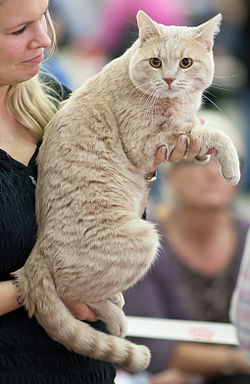This article has multiple issues. Please help improve it or discuss these issues on the talk page . (Learn how and when to remove these messages)
|
A cat show is a judged event where the owners of cats compete to win titles in various cat registering organizations by entering their cats to be judged after a breed standard. Both pedigreed and companion (or moggy) cats are admissible, although the rules differ from organization to organization. Cats are compared to a breed standard, and the owners of those judged to be closest to it are awarded a prize. Moggys are judged based on their temperament. Often, at the end of the year, all of the points accrued at various shows are added up and more national and regional titles are awarded.




